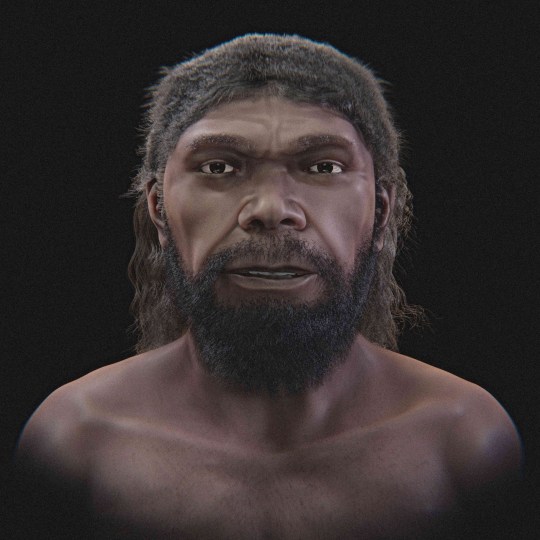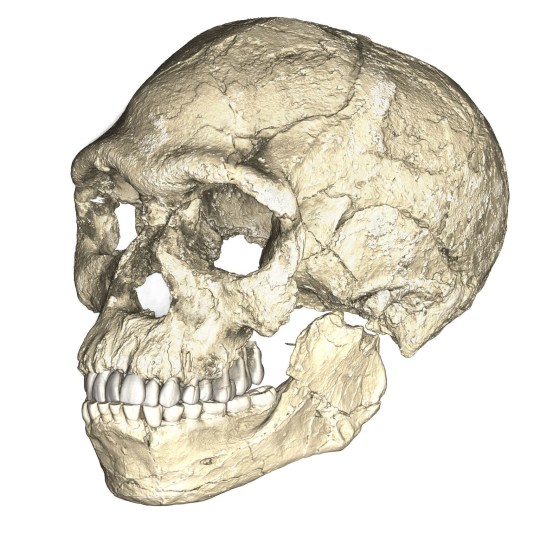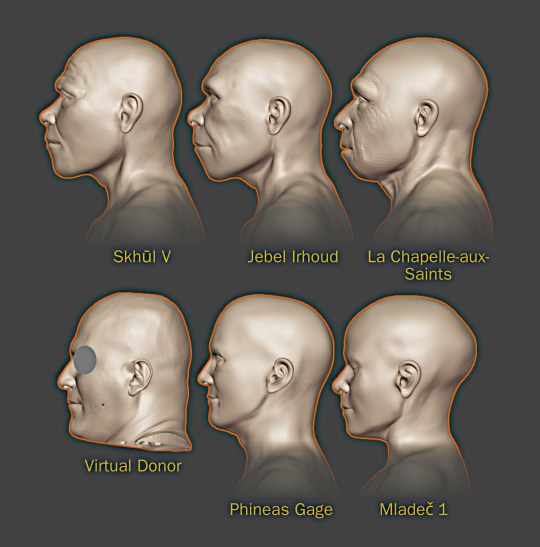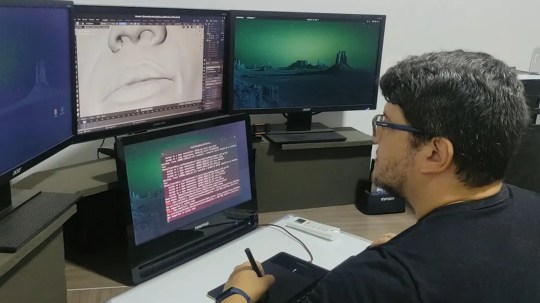If you’ve ever wondered what your ancestors looked like 300,000 years ago, look no further.
The face of the oldest known human has been reconstructed for the first time, revealing a man described as ‘strong and calm’.
It was created by Brazilian graphics expert Cicero Moraes, who brought our relative back to life using a 3D scan of the skull.
The fossils come from the Jebel Irhoud remains, named after the place in Morocco where they were found – and show that humans, or Homo sapiens, evolved 100,000 years earlier than previously thought.
They also proved that our ancestors outgrew the “cradle of humanity” in East Africa and spread across the continent millennia earlier than previous evidence suggested.
Explaining the process, Mr Moraes said: “I initially scanned the skull in 3D using data provided by researchers at the Max Planck Institute.


“Then I continued with the approximation of the face, which consisted of crossing several approaches, such as anatomical deformation.
The technique involved mapping a 3D diagram of the skull onto a prototype “donor” skull that was based on an adult male with a low body mass index.
Mr Moraes said he decided to give the skull a male face based on the skull’s “robust and masculine” features.

Additional data from modern humans were used to predict the thickness of soft tissue and the likely projection of the nose and other facial structures.
“The final face is an interpolation of all this data, which generates two sets of images, one objective, with more technical elements, without hair and in grayscale,” said Mr. Moraes.
“The other is artistic, with skin and hair pigmentation.
The skull itself is actually a composite of various fossils, recreated into a whole that the designer said is “excellent and quite cohesive, anatomically speaking.”

The Max Planck Institute, which supplied the skull data, said the Jebel Irhoud remains had ‘a modern-looking face and teeth and a large but archaic-looking braincase’.
The institute said genetic changes affecting the connectivity, organization and development of the brain transformed the braincase into the skulls we all have today.
Moraes agreed and compared the Skhul V skull to archaic Homo sapiens.
The Jebel Irhoud skull has some features compatible with Neanderthals or Heidelbergensis [extinct human relatives].
“It is very interesting to observe the differences and compatibility between the structures of these skulls and faces over thousands of years.”

Fossils from the Jebel Irhoud site were originally discovered in the 1960s and were estimated to be about 40,000 years old, before scientists revisited the site and new techniques revealed the bones to be roughly 300,000 years old.
Jean-Jacques Hublin of the Max Planck Institute said at the time: “We thought that 200,000 years ago the cradle of humanity was in East Africa.
“In fact, we found that Homo sapiens spread across the African continent even earlier, about 300,000 years ago.”
The discovery eclipsed what was previously the oldest Homo sapiens remains found in Omo Kibish, Ethiopia, dating back 195,000 years.
MORE: Microplastics found in human penis cause fertility concerns
MORE: Four injured after crane crashes into wall at Edinburgh construction site
MORE: Ricky Gervais praised by fans after ‘brutal’ post mocking Justin Timberlake’s arrest
Get the latest news you need to know, good stories, analysis and more
This page is protected by reCAPTCHA and Google’s privacy policy and terms of service apply.